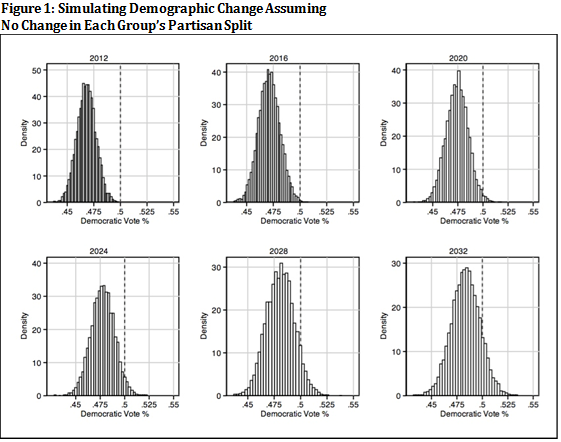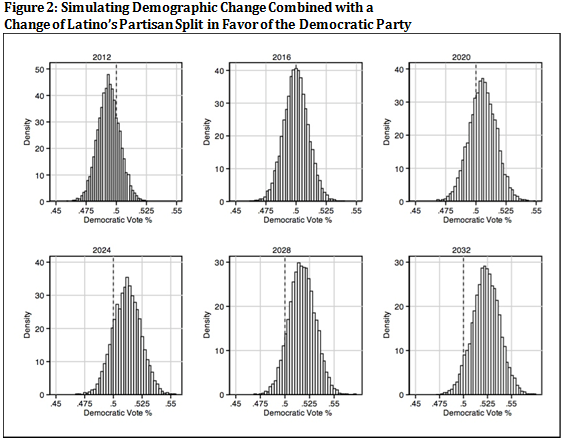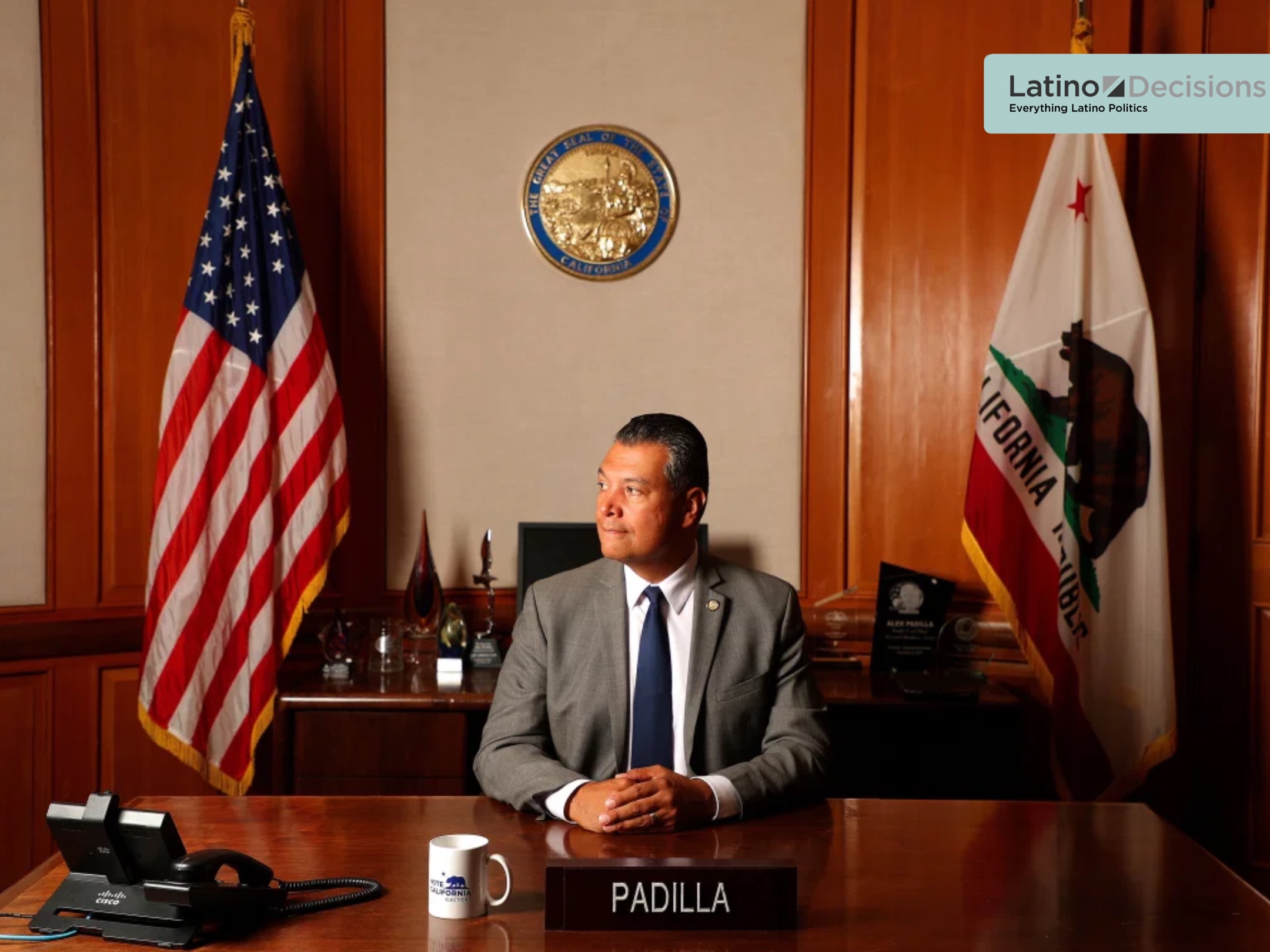This post summarizes a recent publication from the journal Politics of Groups and Identities, the full article can be read here.
The Republican Party’s path to 270 Electoral Votes has become increasingly narrow. With formerly Republican states like Virginia, North Carolina, and Colorado now up for grabs, Republican presidential candidates must win virtually every remaining swing state. Because the Democrats have managed to put so many states in play, Republicans’ national-level chances hinge on preventing any more solidly Republican states from becoming competitive. Many contend that solidly Republican Arizona is poised to become a swing state in upcoming elections.
Arizona has gone Republican in every presidential election but one (1996) since the Second World War. Yet, the reasons why the Democrats might put Arizona in play are straightforward. Arizona’s demographic composition is rapidly changing—young Latinos are rapidly replacing older whites. These demographic changes are politically significant because Latinos and young people are heavily Democratic constituencies, while older whites are predominantly Republican. Demographic changes are tipping the scales in favor of the Democrats.
Moreover, Arizona’s Republican-controlled state legislature has been very aggressive in enacting policies designed to crack down on undocumented migrants. SB 1070, enacted in 2010, was the cornerstone of Arizona’s effort to identify, arrest, and deport undocumented migrants. SB 1070 has been extremely unpopular among Latinos, with the ‘show me your papers’ provision of the law being especially unpopular. The level of Latino dissatisfaction with SB 1070 has induced increased Latino political mobilization. The Republican Party’s alienation of the rapidly growing Latino population raises the possibility that Arizona is poised to swing Democratic in 2016 and beyond. But just how likely is this possibility?
Demographic Change and the Future of Arizona Politics
This is the question that Gregory Robinson, Jonathan Krasno, Michael A. Allen, and I asked in our article “Creating a Racially Polarized Electorate: the Political Fallout of Immigration Politics in Arizona and California,” which is forthcoming in Politics, Groups, and Identities. To answer this question, we ground our analysis in a parallel event that occurred nearly 20 years prior—the passage of Proposition 187 in California.
Proposition 187, despite being a ballot initiative, was championed by then Governor Pete Wilson (a Republican) who was caught in the midst of a heated reelection campaign in 1994. The initiative, which passed with 58.9 percent of the vote, aimed to cut off undocumented migrants from virtually all state-provided services, including healthcare and public education. While the main tenets of the law were immediately challenged in court and were subsequently deemed unconstitutional, the electoral consequences of Prop 187 have been profound. California was a swing state prior to Prop 187, but has been solidly Democratic ever since. Arnold Schwarzenegger has been the only Republican to win statewide office in California since 1994.
The reason for the Democrats’ ascendance in California has been the mobilization of Latinos. Latino naturalization, voter registration, turnout, and Democratic partisanship surged in response to Prop 187. Between 1992 and 2008 the number of Latinos registered to vote in California rose from 1.64 million to 3.66 million, including a jump of half a million newly registered voters between 1992 and 1996 alone. As reported by Bowler, Nicholson, and Segura, Latino Democratic partisanship surged as well. In 1992, only 38 percent of Latinos were registered as Democrats. By the early 2000s, this number had risen to 63 percent. Latino mobilization combined with demographic changes has reduced the Republican Party to a permanent minority party in California.
The parallels between Prop 187 and SB 1070 are obvious: both were measures wildly unpopular among Latinos, championed by Republican governors, and passed in states with rapidly growing Latino populations. These similarities raise the possibility that SB 1070 will engender a similar political realignment.
We assessed this possibility with a series of simulations. In these simulations we projected what would happen in Arizona if Latinos mobilize against SB 1070 the same way Latinos in California did 20 years earlier. We make certain assumptions about turnout, group loyalty, and the demographic composition of the electorate and then run 10,000 simulated elections.
We began by estimating the effect that demographic changes will have on the partisan balance in presidential elections. The Latino share of Arizona’s population has gone from 18.8% in 1990 to 29.6% in 2010. We assume that Latinos will continue to constitute a 4-point greater share of the population in each coming decade (e.g. 33.6% in 2020). To build a baseline, we also assume that Latino and non-Latino voting behavior will remain stable at pre-SB 1070 levels. Before SB 1070, Latinos in Arizona were more likely to vote Republican compared to Latinos nationwide. In 2008, 58 percent of Latino Arizonans voted for Obama. At the same time, 72 percent of Latinos supported Obama nationally. Whites Arizonans were also more likely to vote for Republican candidates than whites nationwide. An average of 40 percent of white Arizonans supported the Democratic presidential candidate between 1992 and 2008. Additionally, we assume that Latinos will remain 83 percent as likely as non-Latinos to turnout.
So what effect would demographic changes alone have on the partisan balance? Not much. Figure 1 illustrates the probability of a Democratic victory between 2012 and 2032. Looking at it after the fact, we calculate the Democrats had a 1.7% chance of winning Arizona in 2012. This number would only improve to 5.9% by 2032. Demographic changes alone pose little threat to Republican dominance.

But what if these demographic changes are combined with substantial shifts in Latino voting behavior? In fact, we did observe a considerable change in voting behavior following the passage of SB 1070. Latino Arizonans went from considerably more Republican than Latinos nationwide to considerably more Democratic between 2008 and 2012. 77 percent of Latino Arizonans voted for Obama in 2012, compared to 72 percent nationally. Latino turnout increased as well. Latinos went from 83 percent as likely to turn out as whites to 88 percent as likely.
The Latino mobilization against SB 1070, combined with demographic changes, holds the potential to dramatically reshape Arizona politics. In this second set of simulations we assume that white voting behavior will remain stable and these shifts in Latino voting behavior observed following SB 1070 persist into future elections. As Figure 2 makes clear, behavioral changes in conjunction with demographic changes would put Arizona in play for the Democrats. Working under these assumptions, we project the Democrats would have a 53 percent chance of carrying Arizona in 2016, with the prospects increasing from there.

The results of these simulations raise an interesting question: why did President Obama perform so poorly in Arizona in 2012? Obama did not improve his fortunes in Arizona (Obama won 44.9 percent of the vote in 2008 compared with 44.5 in 2012) even though he received a considerable increase in support from Latinos. The answer to this question is that while Obama enjoyed increased support from Latinos, white voters moved in the other direction. Democratic presidential candidates won an average of 40 percent of the white vote between 1992 and 2008. However, in 2012 this number dropped to a mere 32 percent. In sum, the electorate became increasingly polarized along ethnic lines, with Latinos supporting the Democrats and whites supporting the Republicans.
This is where the trajectories of 1990s California and present day Arizona depart. Whites in California were largely unaffected by the passage of Prop 187, at least over the long-term. White support for the Republican Party had been slowly eroding in California for quite some time and Prop 187 did nothing to stop this. The secular decline in white Republican support combined with an upswing in Latino Democratic support tipped the balance for the Democrats. However, it appears that whites in Arizona responded to the passage of SB 1070 by increasing support for Republicans. This shift in white behavior explains why Obama failed to improve his performance in Arizona.
So what are the odds that Arizona will be put in play if white support for the Democratic Party remains at such low levels? Not very high. Even the combination of demographic changes and a considerable increase in Latino Democratic support will not be enough to undermine Republican dominance should white Republican support remain at 2012 levels. A summary of the likelihood of a Democratic victory in the three different scenarios is displayed below:

Herein lies the heart of the Republicans’ gamble. Passing SB 1070 was sure to alienate the vast majority of Latinos. However, from the Republican perspective, this loss in support among Latinos would be well worth it if taking a hard-line stand on immigration would induce a permanent shift in white voting behavior. In California, this lasting shift in white voting behavior failed to materialize. The question remains whether the shift in white behavior between 2008 and 2012 was an aberration or a signal of a more permanent change?
If white support for Republican candidates in Arizona returns to pre-2012 levels, the Republican Party is in danger. If not, the Republicans have a virtual lock on the state. The Republican Party is banking on maintaining levels of racially/ethnically polarized voting that are typically more common in America’s South rather than the Southwest. The strategy of courting the white vote while alienating Latinos failed in California. Whether this strategy is sustainable in Arizona remains to be seen.
Josh Zingher in an Assistant Professor in the Department of Political Science and Geography at Old Dominion University.


